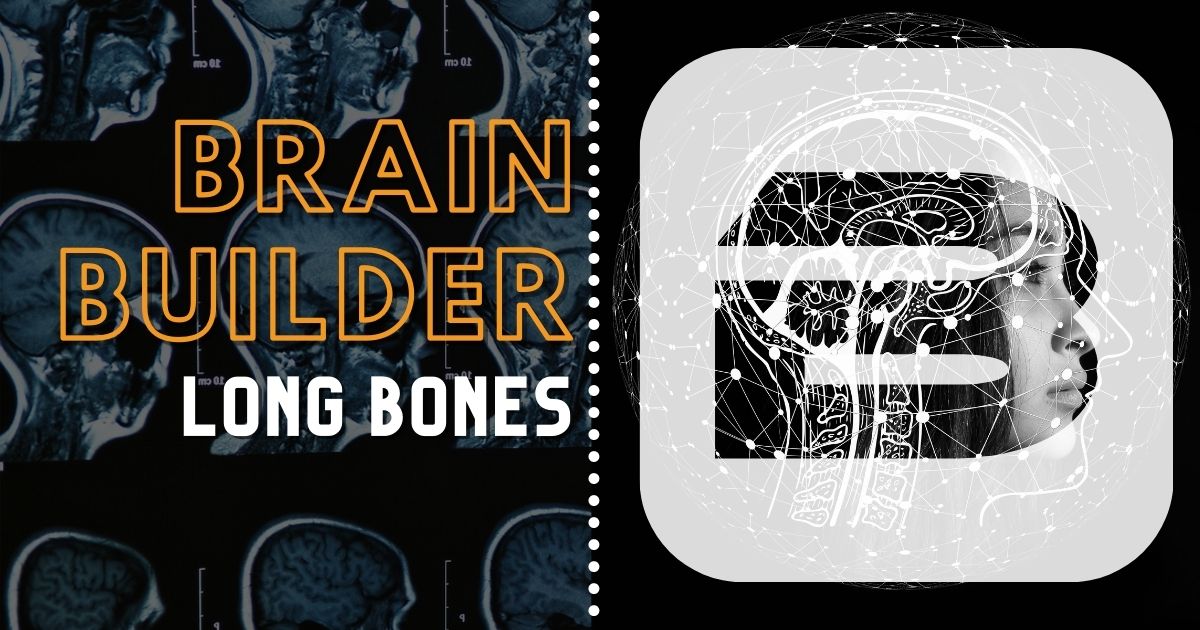Learning Long Bones
by Robert Tallitsch, PhD | August 30, 2021

What makes a bone a long bone? What are the different types of bone? What are the signs of a broken bone?
Learn the answers to these questions and more by watching this video! You will also learn about a long bone fracture (broken bone) symptoms, causes, treatments, and a patient case example!
I taught Human Anatomy at Augustana College (in Rock Island, Illinois) for 43 years and never once did I feel that I got the content “right.” Before each academic year, I would stew about what to cover and what to omit. Early in my career, I decided that less is more, which forced me not to concentrate on course content but rather to concentrate on how well my students were able to utilize the content in order to solve clinical problems. As a result, my consternation about course content took on a totally different emphasis.
For example, if subject matter, such as a “category” (the “categories of bones”) or a piece of terminology, really only gave my students another thing to memorize, I omitted it entirely from the course. I became more and more convinced that I needed to focus on the things that assisted my students in being able to solve clinical problems. Therefore, when I introduced a category of things, I always told my students that “structural categories” are relevant because of what they tell us about the role(s) that a structure plays in the body. One of the “categories of things” that I did spend some time on was how a long bone exemplified the general structure of ossified tissue (bone), what a “typical” long bone looked like, and how that structure enhanced the ability of a long bone to work with skeletal muscle in the production of movement.
Categorizing Bones
Bones are an example of connective tissue — one of the four basic tissues of the body. Bones are typically categorized as flat, long, short, and irregular, but these labels tell us little or nothing about what a bone does. It is more important to know that flat bones typically enclose organs or regions of the body, and that long bones tend to be involved with skeletal muscle movements and act as levers to support this function. Because the remaining categories of bone do little to understand their function, little to no time was spent on them and most of my time was spent discussing long bones and the roles they served.
Bone is a highly vascularized, mineralized form of connective tissue consisting of organic and inorganic components. It is the only tissue that undergoes ossification. Any tissue can calcify; only bone can ossify.
Long Bones
A long bone is longer than it is wide, has expanded articulating ends, and contains a hollow, central medullary (marrow) cavity. The shaft of a long bone is surrounded by two layers of connective tissue that collectively are termed the periosteum. (“Peri” means around, and “osteo” means bone.) The inner layer of the periosteum is termed the osteogenic layer, which is responsible for the formation, remodeling, and repair of the bone. The outer layer is termed the fibrous layer, and it participates in the attachment of structures (such as tendons and ligaments) to the bone, as well as participating in the repair of bone.
The periosteum covers only the shaft of the bone, ending at the expanded, articulating ends of the bone. These expanded, articulating ends of the bone are covered with the articular cartilage, which is composed of hyaline cartilage.
The medullary cavity is also lined by a two-layer connective tissue structure, which is termed the endosteum. (“Endo” means internal, or within.) The layer of the endosteum closest to the bone is the osteogenic layer, while the layer furthest from the bone is the fibrous layer. The endosteum, contrary to the periosteum, is discontinuous and is not involved in the attachment of any structures to the bone.
The medullary (marrow) cavity contains marrow, which is also a form of connective tissue. Yellow marrow, which is dominated by adipocytes (fat cells), is typically found within the shaft of the bone, while red marrow, which is dominated by a mixture of mature and immature red and white blood cells and stem cells, is typically found within the trabecular bone. Yellow marrow is thought to serve as an energy reserve, while red marrow is important in blood cell formation.
If a frontal section is made of a long bone you can visualize the compact (or cortical bone) and trabecular (cancellous or spongy) bone. The compact bone forms the thick wall of the shaft (diaphysis) of the long bone, and the thin wall of the metaphyseal and epiphyseal segments of the bone. Trabecular bone is typically found within the metaphyseal and epiphyseal segments of the bone. Compact bone is thickest within a long bone where stress arrives from a limited number of directions, such as the shaft of the bone. Trabecular bone is found within the segments of a long bone where stress arrives from multiple directions simultaneously.
To summarize, long bones work with skeletal muscle in the production of movement. The force, speed and direction of the movement produced by a muscle may be altered by a lever. A lever is defined as a rigid structure that moves around a fixed point, which is termed a fulcrum. In the human body, bones serve as levers and joints serve as the fulcra. Due to their length, long bones are very effective in their roles as levers and, as such, enhance the force of the muscles attached to them.
Want to learn more about 3D anatomy resources like the clips used in this BodyViz Brain Builder video? Excite and engage your students by brining anatomy to life with BodyViz!
Solutions
Learn more by scheduling a demo and teaming up with one of our reps to create a solution for your class!
Schedule Demo
Helpful Links